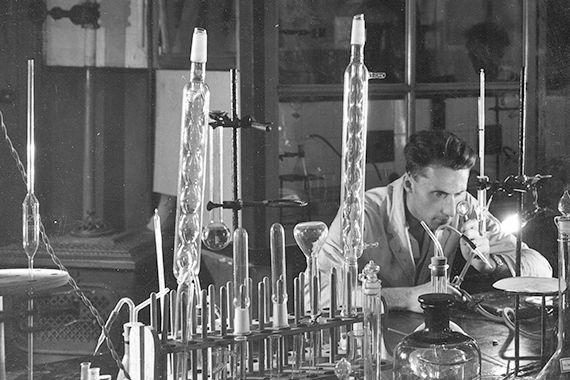Chemical Landmark 2015
The first chemical institute of the University of Fribourg
Designated as «Chemical Landmark» on 13 October 2015.
The seventh distinction of a «Chemical Landmark» goes to the former chemical Institute of the University of Fribourg.

In 1896 the first chemical institute of the University of Fribourg was installed in a former waggon factory, used as arsenal. The building displays the typical architecture of the transition period of the industrialisation and hence the advance of science itself. Between 1896 and 1974 this building accomodated the chemical institutes of the University of Fribourg. Here, German and French cultures of research and education were successfully combined. This led among others to the discovery of the colourant phthalocyanine which is even today used in about 25% of all organic pigments. The technological reach of this discovery could not be recognised at the time.

In 1899 Chaim Weizmann received his doctorate in chemistry as one of the first in the new institute.
Commemorating this, the «Fribourg Chaim Weizmann Lectureship» is awarded annually to a distinguished chemist. The 2015 awardee is Nobel laureate Alan J. Heeger, professor for physics and materials at the University of California, Santa Barbara.
Together with Alan G. MacDiarmid and Hideki Shirakawa, Alan J. Heeger received the Nobel prize in chemistry in 2000 for the discovery and development of conductive polymers, especially polyacetylenes.
In his talk he lectured on «Creativity, Discovery and Risk – Nobel Prizes Past and Future».
In conjunction with this celebration the commemorative plaque was unveiled.






